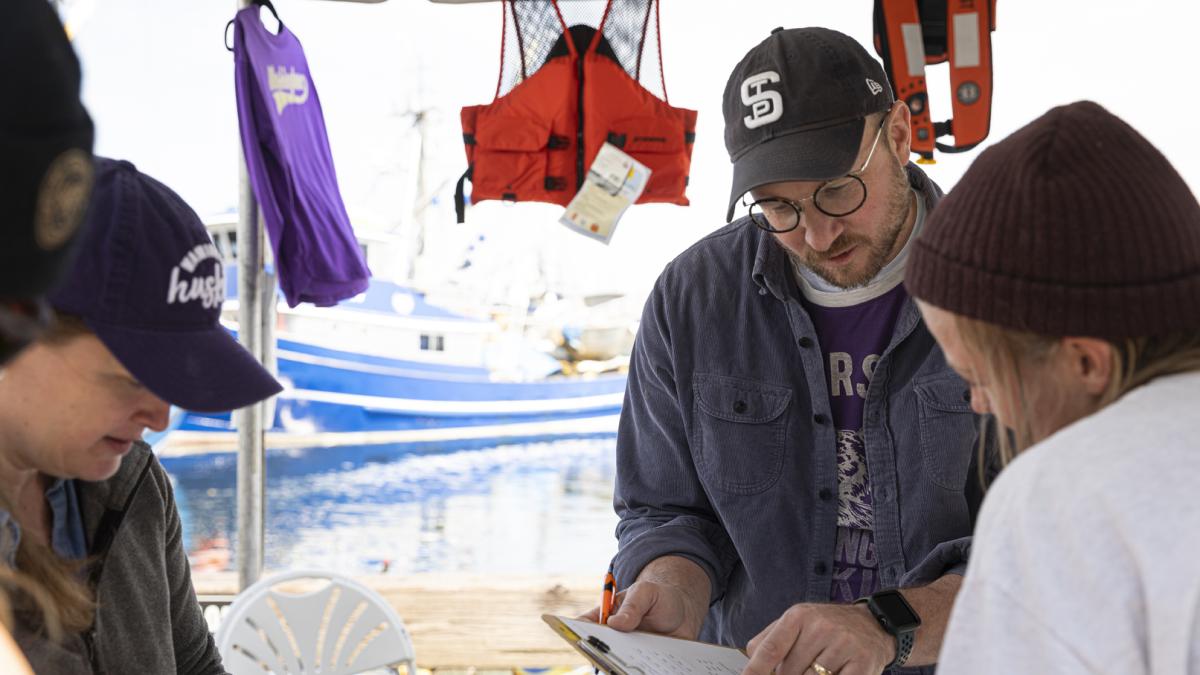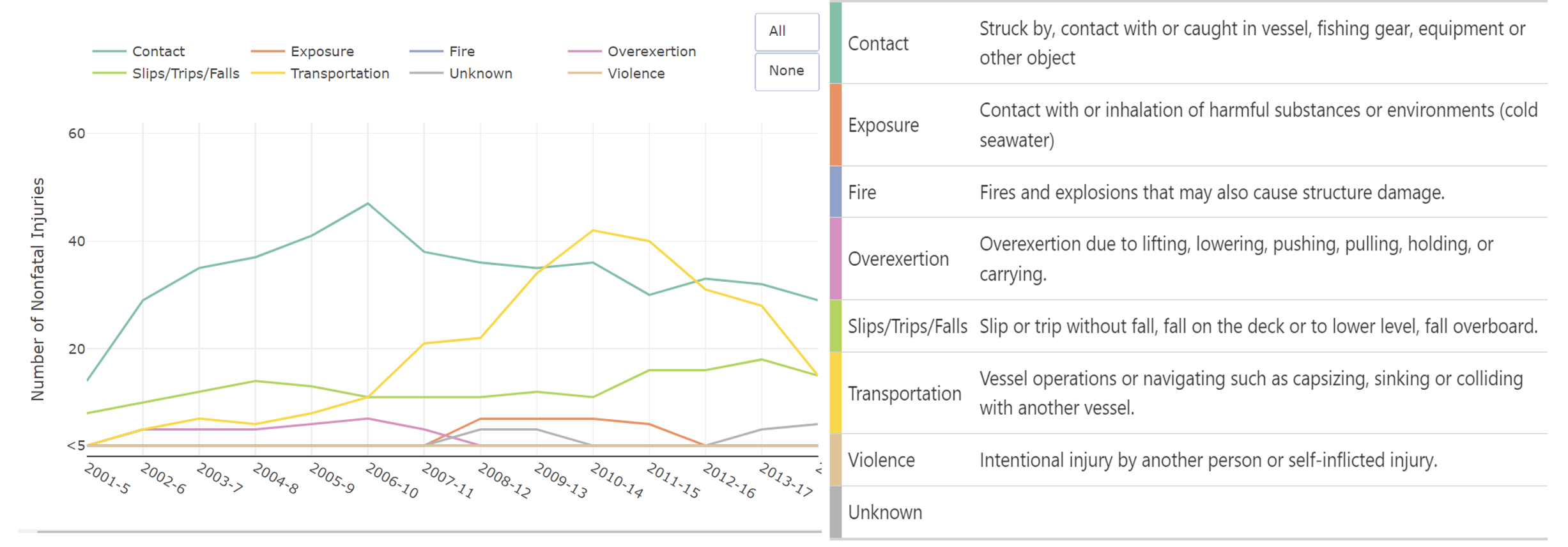
Oregon State University and Oregon Sea Grant, as part of ongoing work with the commercial fishing fleet in the Pacific Northwest and beyond, have developed a research program based on fishermen’s feedback on topics related to injury prevention and health of the fleets. One important part is sharing what we learn back to fishermen. As health and safety professionals, understanding the patterns of injuries and what has happened, helps to identify opportunities to support fishermen.
The Risk Information for Commercial Fishing (RISC) project uses existing datasets from the US Coast Guard and state emergency room registries as well as information collected straight from fishermen to help estimate injury risk and risk factors in commercial fishing in the Pacific Northwest. Sharing what we researchers can see with the fishermen is being transparent and allows fishermen and other stake holders to explore and identify their own opportunities.

The RISC Fishing injury data visualization creates interactive charts that show where and when injuries are happening at sea, as well as the types of injuries that are most common. Injuries can be sorted by state, event, source, fishery and gear type. Here are some of the key findings from the data collected by RISC Fishing:
- The most common type of injury among commercial fishermen is a fall.
- Falls are most likely to happen on deck, while fishermen are working with gear or other equipment.
- Other common injuries include cuts, bruises, and sprains.
- Many of the reported injuries happened while trawl fishing.
Looking at injury data like this can help to identify the risks that commercial fishermen face and to develop strategies for preventing injuries. Knowing how and where injuries are happening can help inform changes to work practices for safety and efficiency.
We are currently surveying fishermen in the Pacific Northwest to continue to identify ways to reduce the risk of injury. Reach out if you would like to participate: amelia.vaughan@oregonstate.edu.
This project is funded by the University of Washington Pacific Northwest Agricultural Safety and Health Center. More information about that and the RISC Fishing system can be found at here: https://deohs.washington.edu/pnash/fishing-safety


